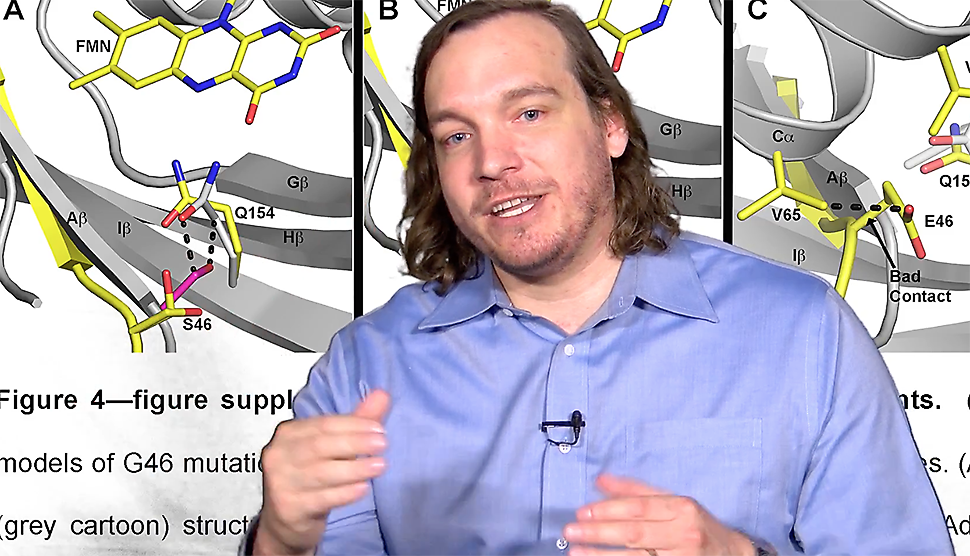Farmers growing crops under any conditions might sound impossible, but a new study by researchers at Southern Methodist University that explains how plants tell time could make that far-fetched idea a possibility.

Click the image to watch SMU video “The Chemistry of Why and How Plants Tell Time.” [Photo: via SMU video]
Brian D. Zoltowski, an assistant professor and chemist at Southern Methodist University, along with a team composed of members from the University of Washington and Ohio State University, have created plant hybrids that react in specific ways to blue-light.
It’s how plants know when to flower or when to metabolize nutrients.
“With these plants, we demonstrate that indeed we can tune how the organisms respond to their environment in an intelligible manner,” Zoltowski said in a release.
Zoltowski’s team focused on the structure of the protein, Zeitlupe, and its reaction to sunlight. Examining this relationship gave the team insight into how proteins in plants signal blooming and other functions.
“We now understand the chemistry allowing plants to maintain a natural 24-hour rhythm in sync with their environment.”
Brian D. Zoltowski
“We now understand the chemistry allowing plants to maintain a natural 24-hour rhythm in sync with their environment. This allows us to tune the chemistry, like turning a dimmer switch up or down, to alter the organism’s ability to keep time,” Zoltowski said. “By altering these subtle chemical events we might be able to rationally redesign a plant’s photochemistry to allow it to adapt to a new climate.”
Existing research provided that plants are able to detect daytime from nighttime, as well as seasonal changes, but a gap remained about how this information is integrated by the plant. Using standard techniques to analyze the chemistry and structure of the plant’s proteins, Zoltowski’s team was able introduce mutations of Zeitlupe, rather than relying on selective breeding techniques.
“This gives us pictures and snapshots of all those discrete events, where then we can look at how the atoms are moving and changing from one to the other,” Zoltowski said. “That allows us to see the bonds forming, the bonds breaking, and how the rest of the protein changes in response to that.”
These research findings introduce new questions about protein-altering processes and the influence of other variables on them.
“One of the take-homes is there are areas in the protein we need to look at to see how the amino acids are now different,” Zoltowski said.
This research was published in the article Kinetics of the LOV domain of Zeitlupe determine its circadian function in Arabidopsis in the journal Elife online.







































































